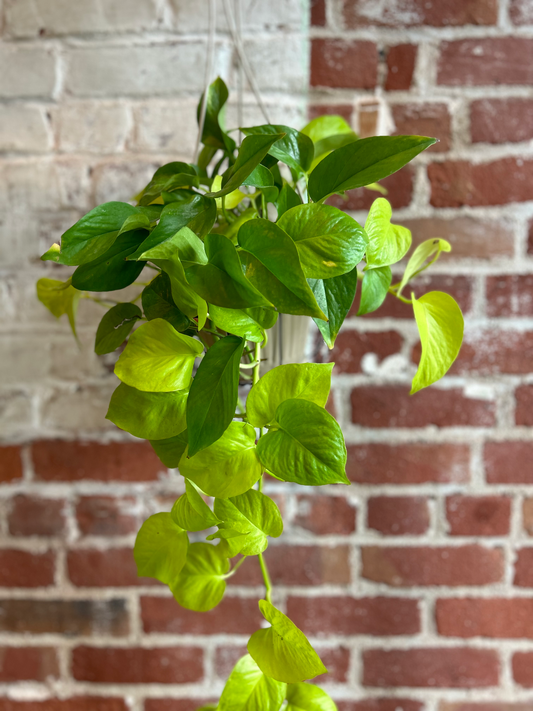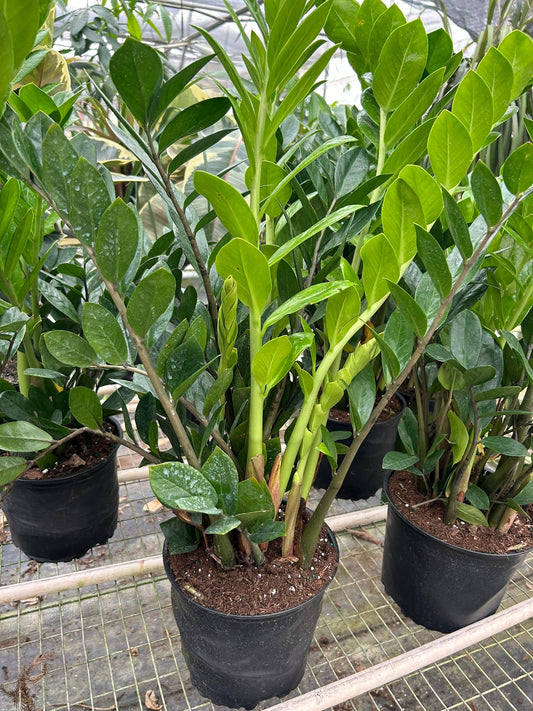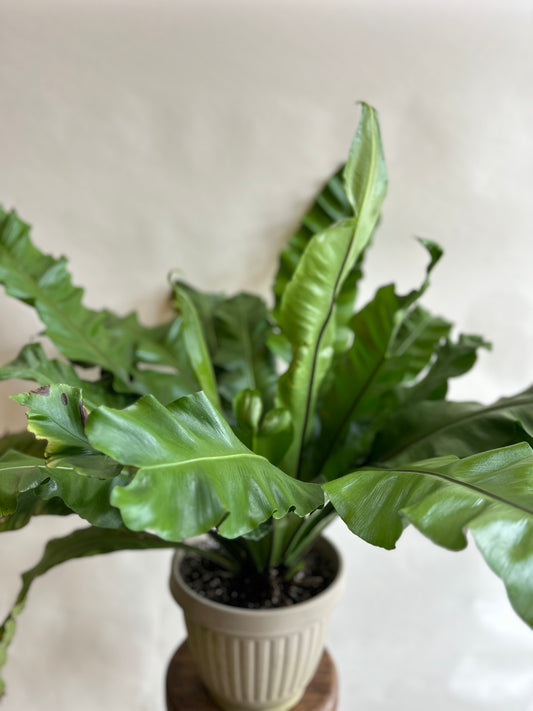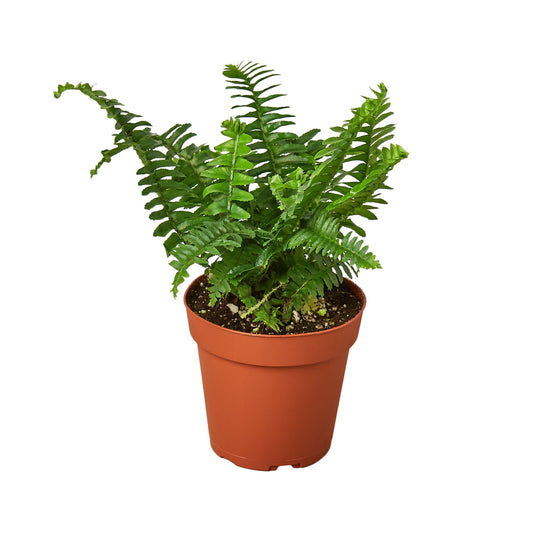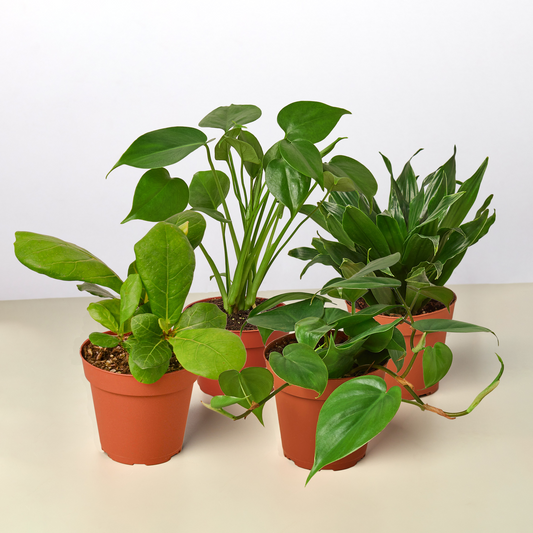How to Propagate Areca Palms
Cafe Planta Team
Areca palms are a popular choice among plant lovers for their graceful appearance and ability to bring a touch of the tropics into any home. If you've been admiring your areca palm and thinking about how wonderful it would be to have more of them around, you're in luck! Propagating areca palms is a rewarding process that allows you to multiply these beauties and share them with friends or enhance your own indoor jungle.
In this article, we'll walk you through the entire process of propagating areca palms, from understanding the best methods to ensuring your new plants thrive. We'll cover everything from choosing the right tools and preparing your plants to caring for your new palms as they grow. Whether you're a seasoned plant parent or just starting your green journey, these tips will help you succeed.
Understanding Areca Palms
Before diving into propagation, it's helpful to get familiar with the plant you're working with. Areca palms, also known as Dypsis lutescens or butterfly palms, are native to Madagascar. They have feathery, arching fronds that create a lush, tropical feel, making them a favorite for both indoor and outdoor settings.
Areca palms are relatively low-maintenance, which adds to their appeal. They prefer bright, indirect light and need well-draining soil to avoid root rot. Overwatering is a common mistake, so it's essential to let the top inch of soil dry out before watering again. With the right care, these palms can grow quite tall, up to 6-10 feet indoors, which is why propagation can be a practical solution if your plant is outgrowing its space.
The Best Time for Propagation
Timing is crucial when it comes to propagating areca palms. The best time to propagate is during the spring and early summer when the plant is actively growing. This period gives your new plants the best chance to establish themselves and thrive.
During this growing season, the parent plant is more likely to recover quickly from having sections removed for propagation. It's also when the environmental conditions are most favorable, with longer daylight hours and warmer temperatures, both of which contribute to successful growth.
Choosing the Right Propagation Method
Areca palms are typically propagated through division rather than seeds. While growing from seeds is possible, it can be a lengthy and less reliable process for home gardeners. Division, on the other hand, is straightforward and ensures that your new plants are genetically identical to the parent plant.
Division involves separating a mature plant into smaller sections, each with its own root system. This method not only allows you to create new plants but also helps manage the size of the parent plant. It's like getting a haircut and a few new plants all in one go!
Gathering Your Tools and Materials
Before you start, make sure you have all the necessary tools and materials on hand. Having everything ready will make the process smoother and help you avoid unnecessary stress on your plant.
- Clean, sharp knife or shears: A sharp blade is essential for making clean cuts, reducing the risk of infection.
- Potting soil: Use a well-draining mix suitable for palms. You can find pre-mixed palm soil or create your own by combining potting soil with sand or perlite.
- Pots: Choose pots with drainage holes to prevent waterlogging. The size should be appropriate for the divisions you're making.
- Watering can: For gently watering your new plants.
- Gloves: Optional, but they can protect your hands from any sharp edges or irritants.
Preparing Your Areca Palm for Division
Once you have your tools ready, it's time to prepare the parent plant. Gently remove the areca palm from its pot, being careful not to damage the roots. If the roots are tightly bound, you might need to work them loose with your fingers or use a gentle spray of water to loosen the soil.
Inspect the root system and identify natural divisions. Each section you plan to separate should have its own set of roots and a few healthy fronds. This ensures that each new plant has a strong start.
Dividing the Plant
With your divisions identified, use your knife or shears to cut through the root ball, separating the sections. Make sure each new section has a good balance of roots and foliage. This might feel a bit nerve-wracking at first, but remember, plants are resilient!
Once you've completed the cuts, gently shake off any excess soil and remove any dead or damaged roots. This quick trim helps encourage healthy new growth.
Potting Your New Areca Palms
Now that you have your divisions, it's time to give them a new home. Fill each pot with a layer of potting soil, place the new plant in the center, and fill in around it with more soil. Press down gently to secure the plant in place, but don't compact the soil too much; you want it to remain loose and airy.
Water the plants lightly to help settle the soil. Make sure the pots are draining well and that there is no standing water at the bottom. This initial watering is crucial for helping the roots establish themselves in their new environment.
Caring for Your Propagated Areca Palms
After potting, place your new areca palms in a location with bright, indirect light. Direct sunlight can be too harsh, especially for newly potted plants. Keep the soil consistently moist but not soggy, and avoid overwatering.
Monitor the plants for any signs of stress, such as wilting or yellowing leaves. It's normal for the plants to take a little time to adjust, but with proper care, they should bounce back and begin to thrive.
Fertilize lightly during the growing season to support healthy growth, but avoid over-fertilizing, which can lead to salt build-up and root burn.
Common Issues and Troubleshooting
Propagating areca palms can sometimes come with a few bumps in the road. Here are some common issues and how to address them:
- Root Rot: This is often caused by overwatering. Ensure your pots have good drainage and that the soil is not staying too wet.
- Yellowing Leaves: This can be a sign of nutrient deficiency or overwatering. Adjust your watering schedule and consider a balanced fertilizer.
- Pests: Keep an eye out for common pests like spider mites and mealybugs. Regularly inspect your plants and treat any infestations promptly.
Final Thoughts
Propagating areca palms is a fulfilling way to expand your plant collection and share the joy of gardening with others. By following these steps, you'll be well on your way to growing happy, healthy new palms.
At Cafe Planta, we're passionate about helping you nurture your green space. Whether you're looking for new plants, accessories, or have questions about plant care, we're here to help. Feel free to reach out via email or connect with us on Instagram. Let's grow together!


